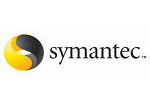Oracle Code Factory FAQ
You are welcome to look through the following Frequently Asked Questions list for getting to know the answers to the most commonly asked questions about Oracle Code Factory.
If you want to ask a question which is not in the list you may apply to our support team.
Oracle Code Factory is a powerful Oracle GUI tool aimed at the SQL queries and scripts development. It allows you to manage SQL queries and scripts using such useful features as code folding, code completion and syntax highlighting, build query visually, execute several queries at a time, execute scripts from files, view and edit result data with filtering, sorting and grouping abilities, export data to as many as 14 file formats including Excel, RTF and HTML, import data from Excel, CSV, XML and text files, view and edit BLOBs in various way, build diagrams based on Oracle data, and much more.
Single license means that a copy of the software is allowed to be used only on a single computer and only by a single user at a time. If you wish to use the software for more than one user, you will need a separate license for each individual user (click the "Order now" button to see volume discounts). Site license means that the software is allowed to be used without limitation on count of installations and users within one organization.
All our products and bundles are shipped with 12 months of free upgrades (minor and major ones) or with 36 months of free upgrades for a quite small additional fee.
- Pentium PC or higher;
- Windows NT4/2000/XP/Vista/Windows 7/Windows 8/Windows 10;
- 1 GB RAM (2 GB or more is recommended);
- 50 MB of free hard disk space;
- SVGA-compatible video adapter.
- 32-bit version of Oracle client software.
- Make sure that "TNSNAMES" is listed as one of the values of the NAMES.DIRECTORY_PATH parameter in the Oracle Net profile (SQLNET.ORA).
- Verify that a TNSNAMES.ORA file exists and is in the proper directory and is accessible.
- Check that the net service name used as the connect identifier exists in the TNSNAMES.ORA file.
- Make sure there are no syntax errors anywhere in the TNSNAMES.ORA file. Look for unmatched parentheses or stray characters. Errors in a TNSNAMES.ORA file may make it unusable.
First of all, please make sure that you have installed an Oracle client software. Next, you can either copy Oracle libraries from ORAHOME folder to ORAHOME\bin one as described here or specify the OCI.dll location in the command line (for example, changing a desktop shortcut) as follows:
OracleMaestro.exe OCIDLL=<full_path_to_oci.dll>
Example:
OracleMaestro.exe OCIDLL=C:\oraclexe\app\oracle\product\10.2.0\server\BIN\oci.dll
Try the following solution:
- Download a Win32 version of Oracle Instant Client Basic (not Basic Lite) from the Oracle website.
- Extract all the files from the archive to a directory (e.g. C:\Oracle\incBin).
- Create a directory (e.g. C:\Oracle\incTNS) and copy there your TNSNAMES.ORA.
- Create a new environment variable TNS_ADMIN=C:\Oracle\incTNS.
- Add the C:\Oracle\incBin directory to the system PATH.




